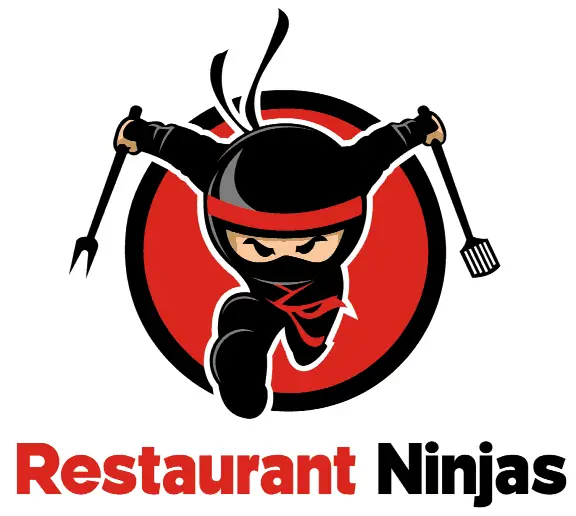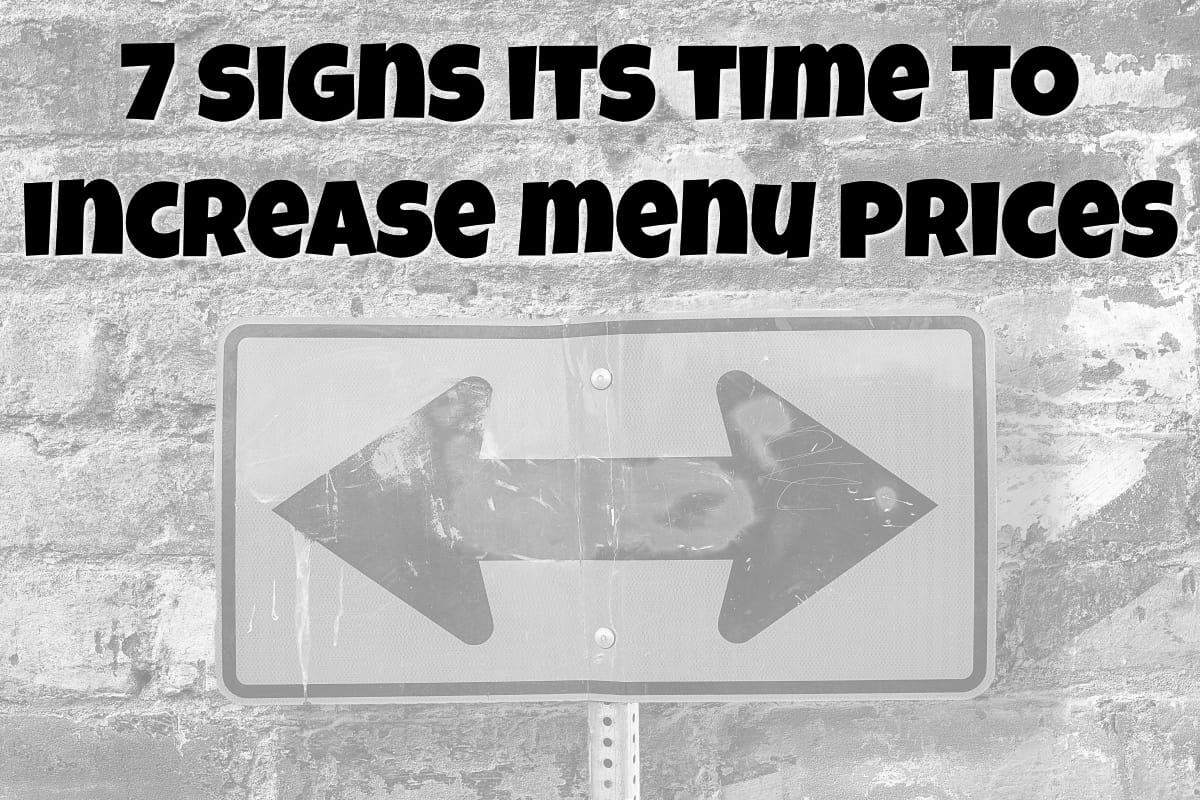Traditionally, restaurants are known to have low-profit margins. As the cost to do business rises, so does the need to pass some of that cost along to your customers. Unfortunately, knowing when it’s time to execute the increase isn’t always as obvious.
When should you increase menu prices? You should increase menu prices when operating costs are growing or when the market is showing opportunity as compared to your competitors. Price increases should happen once or twice a year in small increments across the entire menu.
There are seven major signs to look for when considering increasing prices. Those signs can be classified into one of two buckets. That is, they are either cost-driven or market-driven.
Sometimes costs are begging for a price increase, but the market just cannot handle it. In that scenario, there are some alternatives to increasing prices. Below you will find seven signs to alert you that its time to adjust pricing as well as some alternative ideas if the timing is not right for an adjustment.
Cost Driven Signs
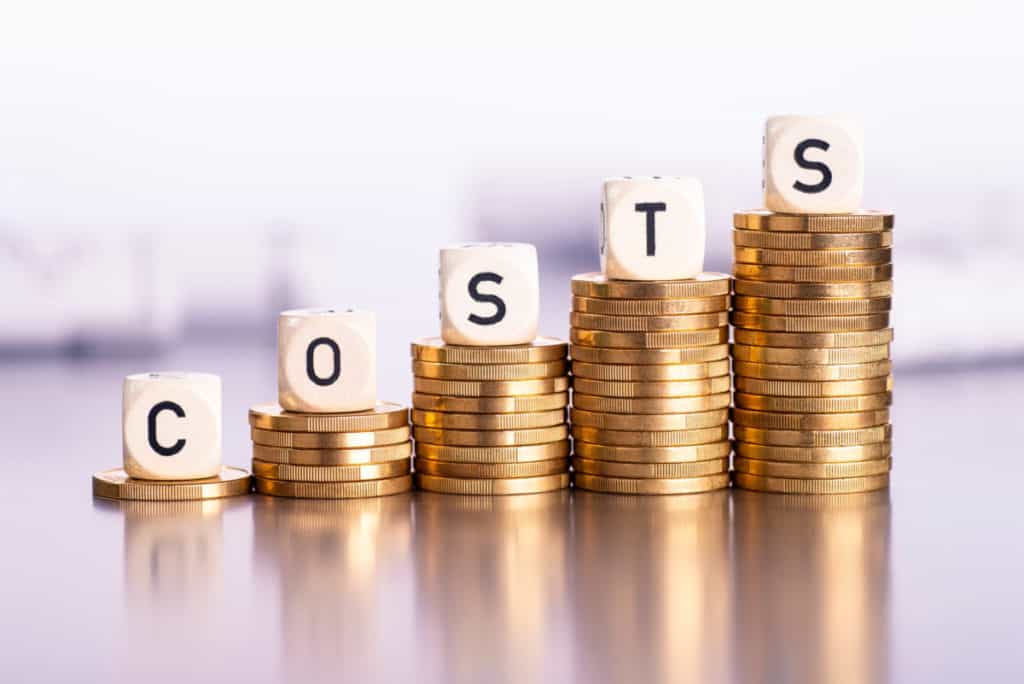
Cost driven signs are far easier to identify than market-driven signs. We can see increasing costs (inflation) just driving down the road each day watching the gas prices change.
Most restaurateurs have no problem identifying when costs necessitate a price increase, but they don’t always see the full picture or consider anticipated future fluctuations. Sometimes these coming changes are easier to foresee than others *cough* minimum wage *cough*. Still, a shrewd operator can anticipate most fluctuations by following the industry, financial markets, and current events.
1. Labor Costs are Increasing
You don’t need to be particularly observant to see the drastic increases in labor cost over the last decade. The minimum wage has been a political hot topic over the past few years, seeing some states raising the minimum wage to as much as $15 an hour. Even worse, some areas of the United States have also increased tipped minimum wage to as high as $13 an hour. Best of all, these numbers continue to grow year over year.
As minimum wage increases, skilled hourly labor like your back of house staff, expect to see their pay rate get a bump as they (rightly) feel there should be a gap between them and entry-level employees. With the unemployment rate so low and jobs plentiful, it’s hard to argue with them.
Fast food and fast-casual chain restaurants like McDonald’s and Panera Bread are trying to combat the increased labor costs by replacing employees with technology in the form of ordering kiosks. Full-Service restaurants like Red Robin even have kiosks (Ziosks) at the table that allow you to pay your bill or order, making it possible to schedule less wait staff.
Unfortunately, the cost of entry for such systems might be too high for many independent restaurant owners.
If you cannot replace or reduce employee need with technology, increasing menu prices might be one of your few alternatives to combat the increasing cost of labor.
2. Cost of Goods Are On the Rise
While not as drastic as the increasing labor costs, the cost of goods (food & beverage) is also continually on the rise. Typically, food costs should be 25 – 35 percent menu price and alcohol costs should be in the 18 – 24 percent range. Some ingredient costs fluctuate daily based on various market factors but, to remain profitable, you need menu prices to allow you to stay in that range.
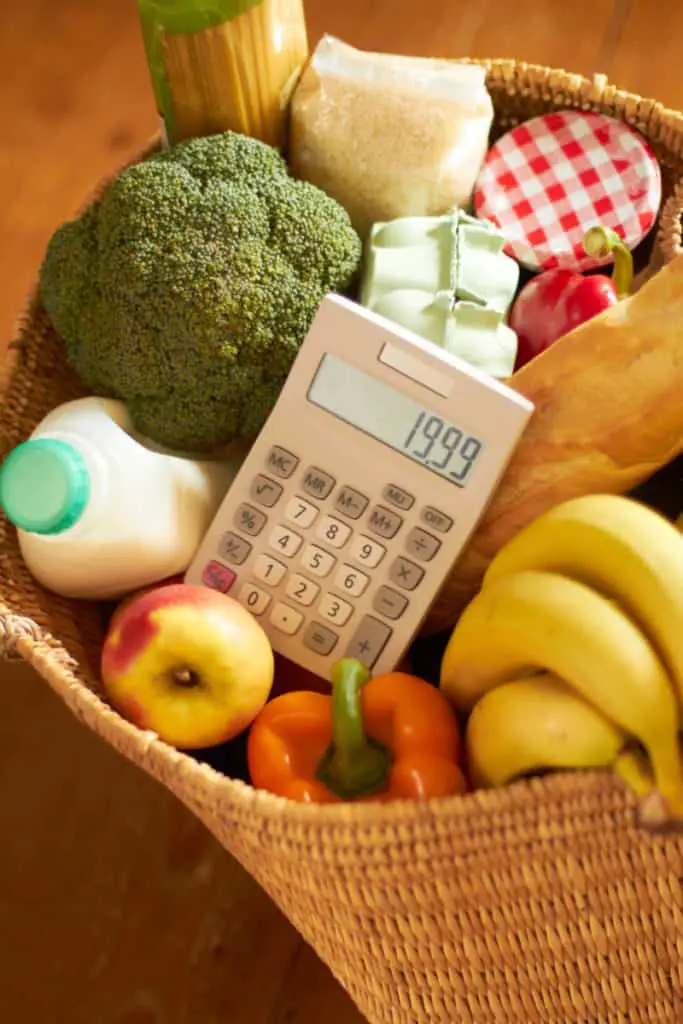
The combination of the cost of goods and the cost of labor are called prime costs. The total prime costs for your restaurant should be 55 – 60 percent. Remember this as you panic about the cost of increased goods or labor: as long as the combined falls into the prime cost range, you’re in a good place. If it does not, it’s time to either cut costs or increase prices.
3. Overhead is Increasing
While the cost of goods and labor are the most volatile, your overhead (often called indirect costs, fixed costs, or just the cost of doing business) can also change.
Utilities, lease, legal expenses, property taxes all can and will increase as time goes by. At some point, this starts to have a direct impact on your profit margin and the often-overlooked cost-driven sign it’s time to increase prices.
Market-Driven Signs

Market-driven signs you should raise prices take a bit more business savvy to see. These signs are about understanding the state of the market, your competition, and how they each impact your pricing strategy.
Most operators are not as savvy in picking up on market-driven signs as they are cost-driven. I can understand that since cost-driven factors are usually pronounced when you look at operating statements while market-driven factors take some digging and awareness of the market.
4. Your Direct Competitors Charge More than You
If your direct competitors are charging more than you for similar menu items, then it’s probably time to take a price increase of your own. To do this, you must be very in tune with your top competitors.
Identifying your direct competitor is usually pretty straightforward. They typically have the same target customer as you. Also, direct competitors have a similar menu, quality of food, quality of service, dining style, and price point.
Once you identify the top handful or direct competitors, you should study them carefully and regularly. That means doing more than just checking out their menu online or Yelp reviews.
You need to go in and visit. Take a look at the overall ambiance and presentation. Order some food; you can’t compare the pricing to your own if you don’t experience the quality of their version. You also need to take portion size into account if they are not the same.
Keep a file on your top competitors that includes information about all of the above. Be sure to visit a few times a year and update your records. Having this information will help you when trying to figure out how you compare to their
In your file, note three to five menu items that are the most similar to your own and evaluate the percentage difference in the price of all items averaged together. Order the food to confirm that the quality level is still the same as your initial assessment. If it is and you are more than 2% below the average of those items, it’s a significant sign that it’s time to adjust pricing.
5. Your Pricing Has Not Changed in Over a Year
If it has been a full twelve months since your last price adjustment, then you are due to reevaluate and most likely enact an increase. The longer you go without adjusting your menu prices, the more significant the impact a price increase will be for your regular customers.
People generally accept small annual price increases in taxes, insurance, and utilities without much resistance because they have gotten used to it. If you increase prices by a few percent every six to twelve months, they will eventually treat it with the same ambivalence.
When people push off a price increase for more than a year, the price increase that eventually becomes vital ends up being for a much larger amount than if they just increased a smaller percentage annually.
6. More Business than You Can Handle
Increasing your pricing based on the intensity of demand is something rarely talked about in food service but bears mentioning.
Typically having more business than you can handle would prompt me to suggest that you are ready for the next level in scaling your restaurant, but there could come a time that you max out a location. If you have no interest in opening a second location (do it!), increasing prices could allow you to scale down without lowering revenue.
7. The Market Can Bear It
The ability of the market to be able to handle a price increase is the end all be all in your decision-making process. If your competition analysis shows that you are priced appropriately, it becomes tough to make a price increase happen without increasing value.
One way to evaluate this is by studying a competitor that you feel is slightly overpriced. Take a look at the online reviews on sites like Yelp and Facebook. Look at all the negative comments. If 25 percent or less are about price, then the market can bear it. If the percentage is between 25 and 50, they are pushing their upper limit, and anything over 50 percent indicates that the market is struggling to bear the price.
I have talked about the value before and, while that still applies, it’s important to remember that the market will always have a limit somewhere. The key is finding where the threshold lie.
It is critical to consider all the factors together because increasing prices based solely on costs could lead to you raising prices to a level so far above your competitors that customers no longer see the value in eating at your restaurant.
Alternatives to Raising Prices
There may come a time that you feel costs are driving you to increase prices, but you are not confident whether or not market can handle the increase.
One option worth exploring in this situation is trying to cut costs by using cheaper ingredients, a cheaper vendor, or by merely reducing the portion size.
Finding the Best Priced Vendor
I know a lot of restaurant owners that swear by using multiple vendors just to play them against each other to get the best price. It often works, but eventually, the time spent negotiating prices reach a point of diminishing returns.
With that said, having a handful of vendors does not hurt. It allows you the ability to find the best price while also protecting you from any volatility you might encounter from supplier problems.
Using Cheaper Ingredients
Another tactic for cutting costs to avoid raising prices is substituting cheaper ingredients. This should only be considered if you can make the substitution without any noticeable change in product quality.
Nutritional values change also has to be considered when looking for lower-priced ingredients. If the new ingredient significantly changes the nutritional value or adds something artificial, it should be strongly contemplated before making the change.
Adjust Portion Sizes
There are a couple of different ways to save money by cutting portions. The first is obvious; just make the meals slightly smaller. While this might seem like a terrible idea, it can work if you do it judiciously.
In my experience, most people are not going to notice if you cut the portion by about 5%. For example, that would make a Ham & Swiss sandwich that usually consists of 5oz of ham have a new standard of 4.75oz.
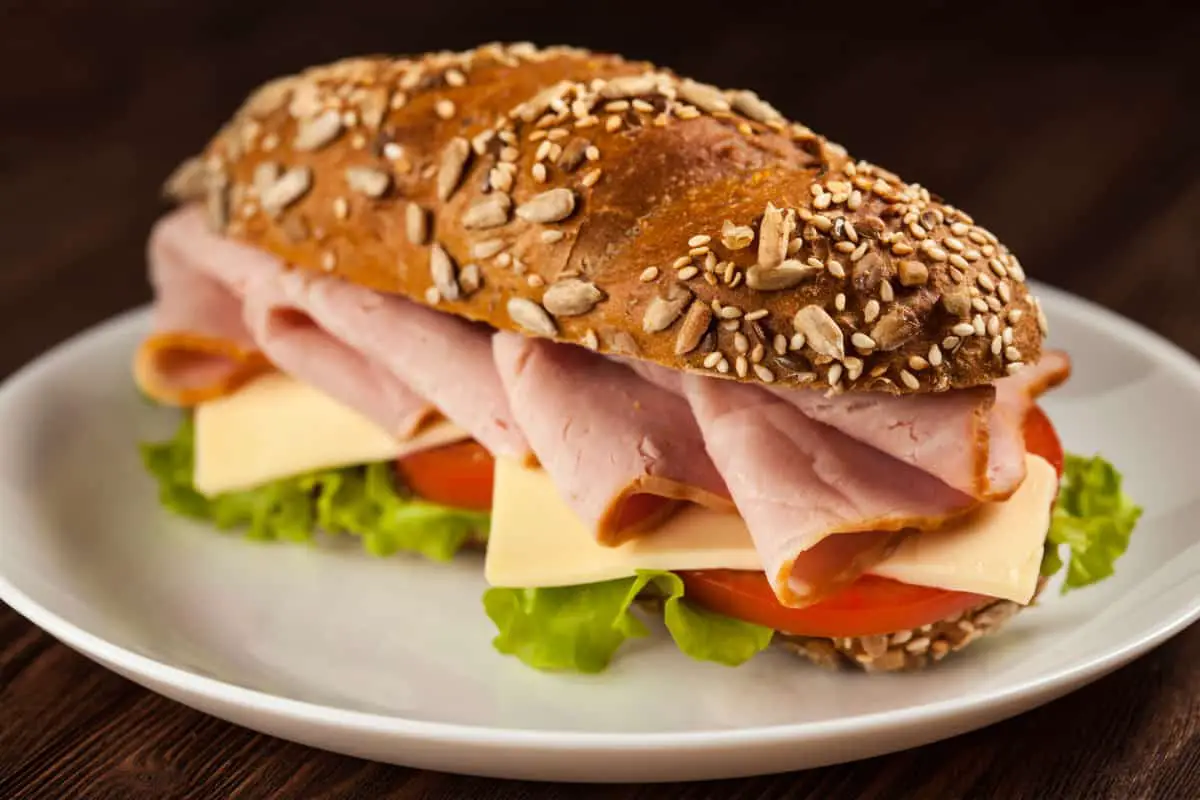
The .25oz might not sound like much, but if you sell 60 or so of those sandwiches a week, it will end up saving you close to 1lb of ham (about $5.) Spread such a portion cut across the menu, and the savings will result in a prime cost increase that will be equal to what you would make with a price increase.
Even though such a small reduction will usually go unnoticed, I highly advise that you only cut portion sizes as described above as a last resort. If you feel that your menu is just not priced correctly, then maybe you should re-brand and create a brand-new menu.
Redesigning your menu to showcase a high penny profit item in a high visibility spot is another way to increase your bottom line without directly adjust your menu prices. You can utilize your social media, service staff, and print advertising to push the highly profitable menu item as well.
The first time I saw this in action was about 15 years ago at a Bar & Grill chain I was managing. We rolled out a fall menu, and the “Pulled Pork Steamboat,” was prominently featured on the first page of the menu with some excellent sales copy and a fantastic picture.
The steamboat, which was a hollowed-out hoagie roll stuffed with pulled barbeque pork and melted shredded cheese, was never a great seller. Once the menu change went into effect, sales of this item quadrupled! The following week, I saw a drastic drop in our food cost. Lesson learned!
Last but not least, another price increase alternative is to modify serving sizes to a completely different size that is not scaled down proportionally in price. For example, instead of serving a double stuffed chicken breast platter for $19.99, you can drop the “double” from the name and just have a stuffed chicken breast meal for $13.49.
Some of the signs that it is time to increase menu prices are more “in your face” than others. After reading this, you should be better equipped to identify these signs and have ample knowledge of alternatives should a price increase not be currently feasible.
If you are going to increase prices, check out this article to learn how to raise then without angering customers.
